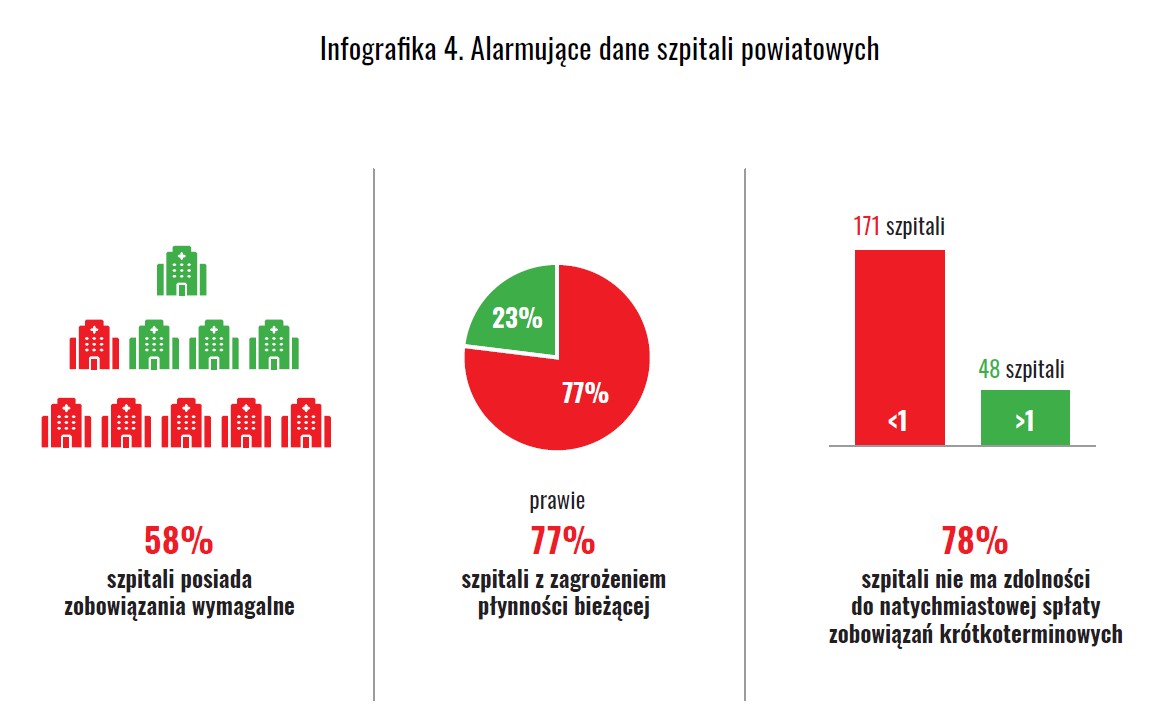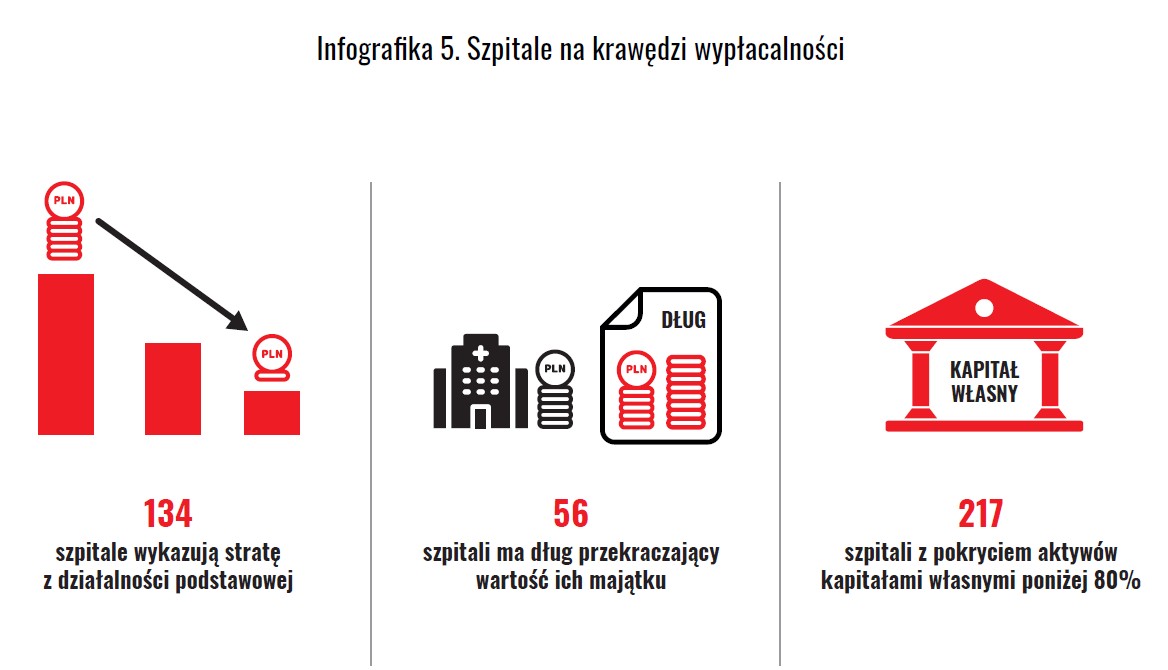District hospitals in crisis. Insolvency and closure of facilities on the horizon

- Experts from the Association of Polish Counties, Bernadeta Skóbel and Katarzyna Sekuła, have prepared a report on the financial situation of county hospitals in 2024.
- The data provided in the preliminary financial reports of the hospitals indicate how difficult their situation is.
- For patients, this means a risk of limited access to health services and even the possibility of hospital closures.
Experts from the Association of Polish Counties, Bernadeta Skóbel and Katarzyna Sekuła, have prepared a report on the financial situation of county hospitals in 2024. It was created based on data from preliminary reports on the finances of entities performing medical activities in the public sector, which public hospitals are obliged to prepare and submit in the e-Health Center system.
The conclusions drawn from the report concerning 219 entities - including 170 independent public health care facilities and 49 commercial law companies for which the managing or ownership body is a county or a city with county rights - do not inspire optimism.
District hospitals are financially dependent on the National Health Fund.As recalled in the report, district hospitals are largely financed from the National Health Fund – contracts with the National Health Fund constitute the main source of revenue, reaching an average of 93% of their net sales revenue.
This means that their functioning is almost entirely dependent on the decisions of the public payer, including the amount and structure of contracted services, the rules for settling overpayments or changes in the pricing of individual medical procedures.
- said the authors of the report.
They noticed that, as a result, hospitals have very limited flexibility in financial management and almost zero ability to diversify revenues, while any delays in payments by the National Health Fund, contract reduction or introduction of unfavorable system changes can quickly lead to a deterioration of their financial situation as hospitals . Often, the only solution is to get into debt.

The report further indicates that dependence on the National Health Fund means that hospitals are unable to fully respond to the health needs of the local community if they are not reflected in the structure of contracted services . In practice, this can lead to restrictions in the availability of services despite the real needs of patients. In addition, the inability to negotiate financing conditions means that even an increase in costs (e.g. salaries or energy) is not automatically compensated on the revenue side, which in turn deepens deficits.
The difficult situation of district hospitals in Poland is confirmed by the following numbers:- The operating costs of the 219 district hospitals examined exceeded PLN 29.2 billion in 2024, of which the largest part was: salaries (40.5% of all operating costs) and external services (30.6%) . This shows the huge burden on hospital budgets resulting from employment costs, which is the result of wage pressure and rising personnel costs in the healthcare system and leaves little margin for flexible budget management. The large share of personnel costs also reflects the key role of medical and support staff in the functioning of hospitals - without providing adequate staff, it is impossible to conduct current operations or implement contracts with the National Health Fund. In turn, the high share of external costs, i.e., external costs of diagnostic services, cleaning, security, IT services, catering services or medical services provided by external companies, although it may bring some organizational savings, at the same time increases fixed costs and limits the financial flexibility of facilities .
- Revenues do not cover operating costs - the total net loss of the entities examined amounted to over PLN 772 million, and the loss from sales exceeded PLN 1.36 billion. Over 82% of hospitals reported a loss on core operations. The shortfall in revenues poses a serious threat to the stability of the functioning of district hospitals and means that the units are unable to settle their liabilities on an ongoing basis , which leads to deepening debt, including payable liabilities. In the long term, this may mean the need to limit the scope of services provided, deterioration of the quality of care or even the risk of insolvency of some facilities .
- Maturity liabilities, i.e. those whose repayment date has already passed, occur in as many as 127 out of 219 hospitals , even though public finance sector entities should not generate such arrears. Their presence is evidence of chronic underfunding of the system.
- Nearly 80% of hospitals have a current liquidity ratio below the safe threshold of 1.5, and more than half have a quick liquidity ratio below 0.5, which means they have lost the ability to meet short-term liabilities .
- 56 of the 219 hospitals surveyed have debts exceeding the value of their assets.
ZPP experts emphasize that while individual cases of negative operating and net results may result from individual organizational or local conditions, the collective picture of over 200 entities indicates a systemic mismatch between the model of financing health care services and the actual costs of their implementation.
Losses at the level of basic operational activity prove that most hospitals are not able to cover the costs of services from the funds received - primarily from NHF contracts. Moreover, the reported net loss - reduced by any subsidies or other forms of support - indicates that even additional sources of financing do not compensate for current shortages.
- indicated in the ZPP report.

Experts warn that in the long term, in the absence of systemic changes, such a deepening operational deficit threatens not only further indebtedness of hospitals, but also their insolvency, limited access to health services and loss of continuity of functioning of some medical units .





